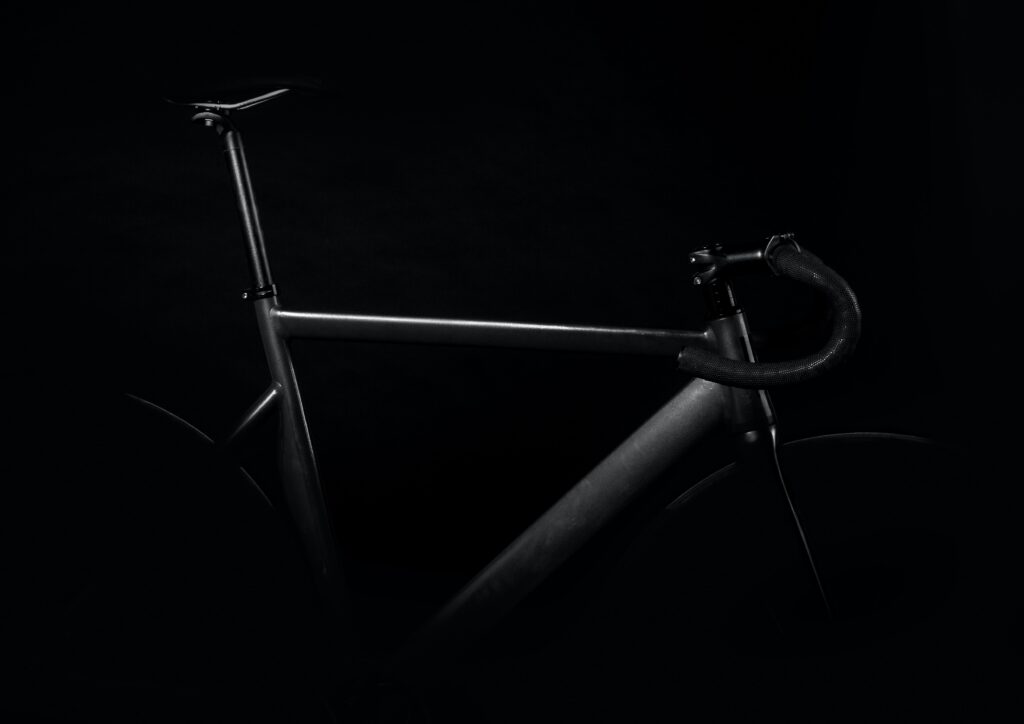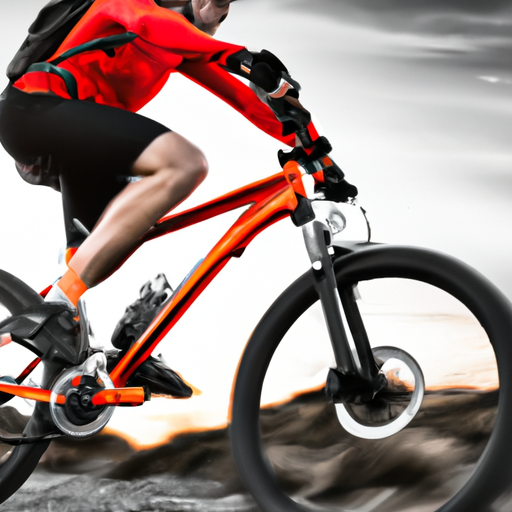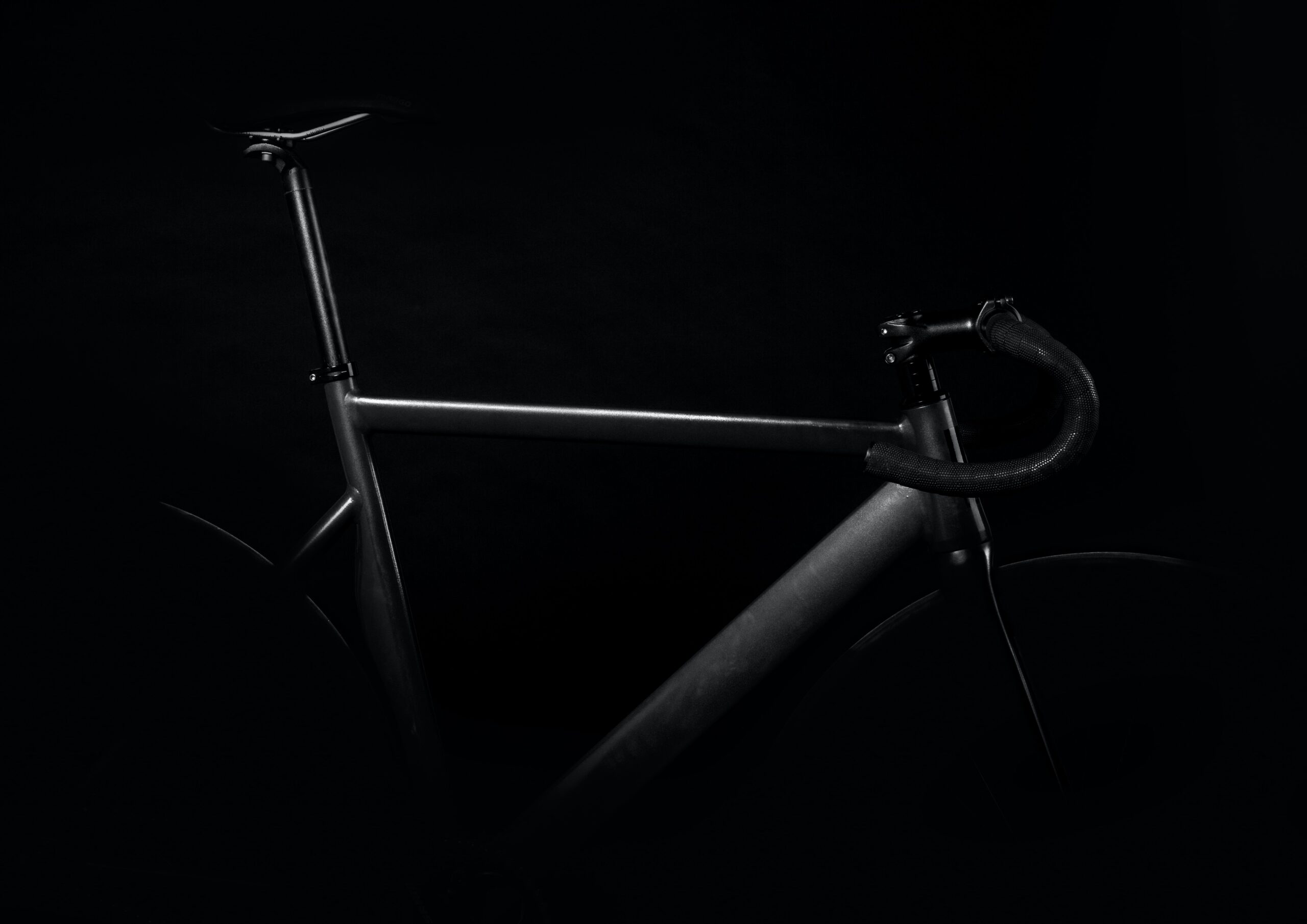Hey there, fellow E-Bike enthusiasts! Are you ready to take your riding skills to new heights? Our “Advanced E-Bike Riding Tips” section is here to guide you through the intricacies of e-biking, and today we’re focusing on conquering those steep inclines. Whether you’re a seasoned rider looking to tackle challenging terrains or a thrill-seeker wanting to push the limits, we’ve got you covered. From advanced techniques to maximize traction to mastering the art of weight distribution, our comprehensive guide will help you navigate any uphill obstacle with confidence and finesse. So buckle up and get ready to power through those climbs like a pro!
Understanding Gear Ratios
Using low gear for steep inclines
When tackling steep inclines, it’s important to use a low gear to make pedaling easier. The lower the gear ratio, the easier it will be to climb. This is because a lower gear ratio provides more torque, allowing you to exert more force on the pedals with less effort. By using a low gear, you can maintain a steady cadence and prevent your legs from tiring too quickly.
Utilizing the full range of gears
To optimize your climbing performance, it’s essential to utilize the full range of gears on your e-bike. Each gear provides a different ratio, allowing you to find the perfect combination for the gradient you’re facing. By using different gears, you can adapt to changes in slope and maintain a consistent pedaling cadence. Experiment with different gear ratios to find the sweet spot that allows you to climb efficiently and comfortably.
Understanding the gear number system
Most e-bikes have a gear number system that allows you to easily identify which gear you’re in. The gear number typically corresponds to the number of teeth on the chainring and the cassette. For example, a 1×11 gear system means you have one chainring in the front and eleven cogs in the rear cassette. Understanding the gear number system will help you determine which gear ratio is appropriate for the incline you’re facing.
Adjusting gear ratios based on gradient
As you encounter different gradients during your climb, it’s important to adjust your gear ratio accordingly. On steeper inclines, shift into a lower gear to provide more torque and make pedaling easier. On less steep sections, you can shift into a higher gear to maintain a faster pace. By adjusting your gear ratios based on the gradient, you’ll be able to climb more efficiently and conserve energy for the rest of your ride.
Climbing Position and Body Alignment
Keeping weight centered and balanced
Maintaining a centered and balanced body position is key when climbing steep inclines. Keep your weight evenly distributed over the bike, avoiding excessive leaning forward or backward. This ensures that your bike’s tires have optimal traction and helps you maintain control and stability during the climb.
Positioning your body over the pedals
To maximize power transfer when climbing, position your body directly over the pedals. This allows you to apply force efficiently through your legs and engage your glutes and core muscles. By aligning your body with the pedals, you’ll be able to generate more power and maintain a steady rhythm as you ascend.
Bending your elbows and keeping a relaxed grip
When climbing, it’s important to maintain a relaxed and comfortable upper body position. Bend your elbows slightly to absorb any vibrations or bumps in the terrain. This will help reduce fatigue in your arms and shoulders. Additionally, keep a relaxed grip on the handlebars to avoid tension in your hands and allow for better bike control.
Anticipating and adjusting for changes in gradient
As you climb, the gradient of the terrain may change unexpectedly. Anticipate these changes and be prepared to adjust your body position accordingly. On steeper sections, shift your weight slightly forward to maintain traction on the front wheel. On less steep sections, you can shift your weight slightly back to maintain balance. By adapting to changes in gradient, you’ll be able to climb more efficiently and comfortably.

Maintaining Momentum
Carrying speed from the flat section before the climb
One of the key strategies for climbing steep inclines is to carry momentum from the flat section leading up to the climb. By pedaling hard and maintaining a higher speed before the ascent, you’ll be able to take advantage of the bike’s kinetic energy and make the initial climb easier. This momentum can help you overcome the initial resistance and get a head start on the ascent.
Pacing yourself to maintain a consistent speed
When climbing, it’s important to find a pace that you can sustain for the duration of the ascent. Pushing too hard at the beginning may cause you to burn out quickly, while starting too slow may make it harder to regain momentum. Find a comfortable rhythm and maintain a consistent speed to conserve energy and make the climb more manageable.
Avoiding sudden changes in cadence
Maintaining a steady cadence is crucial when climbing steep inclines. Avoid sudden changes in cadence, as this can disrupt your rhythm and make it harder to maintain momentum. Instead, focus on smooth, controlled pedaling strokes to keep your speed consistent and your energy expenditure optimized.
Maintaining traction on loose or slippery surfaces
When climbing on loose or slippery surfaces, maintaining traction is essential. To improve traction, distribute your weight evenly on the bike and avoid sudden movements or jerky pedaling strokes. Choose a gear that allows for a controlled and steady climb, and be mindful of obstacles or patches of loose terrain that may reduce traction.
Pedaling Techniques
Pedaling in circles to maximize power
One of the most efficient pedaling techniques for climbing is pedaling in circles. Instead of simply pushing down on the pedals, focus on applying force throughout the entire pedal stroke. This means pulling up on the backstroke and scraping your foot backward as you complete the rotation. By pedaling in circles, you’ll engage more muscles and generate more power, making your climbs more efficient.
Maintaining a steady cadence
A steady cadence is crucial when climbing steep inclines. Find a rhythm that allows you to maintain a consistent pedal turnover without straining your legs or losing momentum. Aim for a cadence of around 60 to 80 revolutions per minute (RPM), adjusting as needed based on the terrain and your fitness level. A steady cadence will help you climb efficiently and reduce the risk of fatigue.
Mashing technique for short bursts of power
In certain situations, you may need to generate a burst of power to overcome a particularly challenging section of the climb. This is where the mashing technique comes in handy. To execute the mashing technique, shift into a higher gear and push hard on the pedals, using your body weight and upper body strength to generate power. This technique is most effective for short bursts since it can be tiring over longer distances.
Spinning technique for extended climbs
For longer climbs, the spinning technique is more suitable. The spinning technique involves using a lower gear and maintaining a higher pedal turnover throughout the climb. This technique minimizes strain on your muscles and allows for a more sustained effort. By spinning the pedals at a high cadence, you’ll be able to distribute the workload evenly and avoid fatigue.

E-Bike Power Modes
Understanding different power assist levels
Most e-bikes come with different power assist levels that provide varying levels of assistance while pedaling. These power modes range from eco or low power, which provides minimal assistance, to turbo or high power, which gives maximum assistance. It’s important to familiarize yourself with the different power modes on your e-bike and understand how they affect your climbing performance.
Choosing the appropriate power mode for steep inclines
When faced with steep inclines, it’s beneficial to increase the power assist level on your e-bike. This will provide you with the extra push needed to conquer the climb more easily. Experiment with different power modes to find the one that suits your preference and climbing ability. Keep in mind that using higher power modes may deplete your battery faster, so manage your power usage accordingly.
Utilizing the power boost feature for challenging ascents
Some e-bikes come equipped with a power boost feature that provides an extra burst of power when needed. This feature can be particularly useful when facing challenging ascents. By engaging the power boost mode, you’ll get a temporary boost in assistance, allowing you to overcome difficult sections of the climb more easily. Use this feature strategically to conserve battery power.
Managing battery consumption on long uphill sections
When tackling long uphill sections, it’s important to manage your battery consumption effectively. Start with a full battery and choose an appropriate power mode that balances assistance with battery life. Be mindful of your power usage throughout the climb and consider adjusting the power assist level when necessary. By managing your battery consumption, you’ll ensure that you have enough power to complete your ride without running out of energy.
Line Selection
Choosing the smoothest and least steep line
When climbing steep inclines, it’s important to choose the smoothest and least steep line available. Look for areas with less loose gravel, rocks, or obstacles that may affect your traction. Selecting a line with a smoother surface and a less steep gradient will make your climb more manageable and help you maintain momentum.
Identifying obstacles and planning your route
Before starting your climb, take the time to identify any obstacles or challenging sections along the route. By planning your line and mentally mapping out the best path, you’ll be better prepared to navigate through technical sections or avoid potential hazards. This foresight will help you maintain a smooth and efficient climb.
Utilizing switchbacks for extended climbs
Switchbacks, or zigzag turns, can be a useful tool when tackling extended climbs. By utilizing switchbacks, you can reduce the overall gradient of the climb and make it more manageable. Instead of ascending directly up a steep slope, take advantage of the switchbacks to gradually gain altitude. This technique will help conserve your energy and make the climb more enjoyable.
Strategically navigating through technical sections
Some climbs may feature technical sections with tight turns, rocks, or roots. When faced with these obstacles, it’s important to navigate through them strategically. Slow down before approaching technical sections, choose the best line to maintain traction, and use your body position to stay balanced and in control. By navigating through technical sections with precision, you’ll be able to conquer challenging climbs with confidence.

Weight Distribution and Balance
Shifting your weight to the rear for traction
To maximize traction when climbing, shift your weight slightly to the rear of the bike. This will help increase the weight on the rear wheel, improving its grip on the terrain. By shifting your weight to the rear, you’ll be able to maintain traction and prevent the front wheel from lifting off the ground.
Leaning forward for better weight distribution
To maintain better weight distribution and balance, lean forward slightly when climbing. This will help you engage your core muscles and maintain stability on the bike. Leaning forward also allows you to counterbalance the weight on the rear wheel, ensuring that you have optimal control and traction.
Balancing your body and bike when climbing out of the saddle
When climbing out of the saddle, it’s important to maintain balance and coordination between your body and the bike. Keep your body centered over the bike and your weight evenly distributed between the front and rear wheels. This will help you generate power through your legs and maintain control throughout the climb.
Maintaining control on steep descents after climbing
After conquering a steep climb, you may encounter a steep descent on the other side. It’s crucial to maintain control and balance during the descent. Shift your weight slightly to the rear and keep your body relaxed, allowing the bike to absorb any bumps or obstacles. By maintaining control, you’ll be able to transition smoothly from the climb to the descent.
Body and Mind Endurance
Building strength and stamina through regular training
To improve your climbing performance, it’s important to build strength and stamina through regular training. Incorporate exercises that target your leg muscles, core, and upper body. Additionally, include cardiovascular exercises to improve your endurance. By consistently training, you’ll enhance your overall fitness and be better equipped to tackle steep inclines.
Adopting a positive mindset for challenging climbs
Climbing steep inclines can be mentally challenging, especially when faced with difficult sections. It’s important to adopt a positive mindset and focus on the progress you’re making. Break the climb into smaller, achievable goals and celebrate each milestone. By maintaining a positive mindset, you’ll be able to push through any mental barriers and conquer challenging climbs with confidence.
Breathing techniques to optimize oxygen intake
Proper breathing techniques can significantly impact your climbing performance. When climbing, focus on taking slow, deep breaths to optimize your oxygen intake and prevent shallow breathing. This will help deliver more oxygen to your muscles, improving your endurance and reducing fatigue. Practice breathing exercises during your training to develop a rhythmic and efficient breathing pattern.
Implementing interval training for improved uphill performance
Interval training is an excellent method for improving your uphill performance. Incorporate intervals into your training sessions by alternating between high-intensity efforts and periods of recovery. This type of training helps build strength, stamina, and mental resilience, making it easier to tackle steep inclines. Remember to tailor your intervals to match the intensity and duration of the climbs you’ll be facing.

Technical Skills
Mastering track standing for balance on steep inclines
Track standing is a useful skill to have when climbing steep inclines. It allows you to come to a complete stop without putting your feet down, enabling you to regain balance or adjust your line if necessary. Practice track standing in a safe and controlled environment to improve your balance and bike handling skills.
Performing front wheel lifts for obstacle clearance
When climbing over obstacles such as rocks or roots, performing a front wheel lift can help clear the obstacle more easily. To execute a front wheel lift, shift your weight slightly to the rear, pull up on the handlebars, and push down with your feet. This motion lifts the front wheel off the ground, allowing you to roll over the obstacle smoothly.
Using rear wheel lifts for increased maneuverability
Rear wheel lifts are especially useful when navigating through technical sections during climbs. This skill allows you to lift the rear wheel off the ground momentarily to clear obstacles or change your line. To perform a rear wheel lift, shift your weight slightly forward, pull up on the handlebars, and push down with your feet. This technique provides increased maneuverability and control during climbs.
Executing proper body positioning for technical climbs
Proper body positioning is crucial when tackling technical climbs. When encountering obstacles or challenging sections, shift your weight forward to maintain traction on the front wheel. Keep your elbows bent and relaxed, allowing for better bike control and absorption of bumps. By executing proper body positioning, you’ll be able to navigate technical climbs with precision and confidence.
Maintenance Considerations
Checking tire pressure and tread for optimal traction
Before embarking on a climb, it’s important to check your tire pressure and tread. Proper tire pressure ensures optimal traction and grip on the terrain. Adjust the tire pressure according to the conditions you’ll be facing, keeping in mind that lower pressure provides better traction on loose surfaces. Additionally, inspect the tread on your tires and replace them if they are worn out to ensure maximum grip.
Inspecting brakes and adjusting pad contact
Reliable brakes are essential for safe climbing. Before your ride, inspect your brakes and ensure that the brake pads are in good condition. Adjust the brake pad contact if necessary to ensure optimal braking performance. This will give you confidence and control when navigating steep descents after climbing.
Maintaining a clean drivetrain for smooth shifting
A clean and well-maintained drivetrain is crucial for smooth shifting during climbs. Regularly clean and lubricate your chain and derailleur to prevent any buildup of dirt or debris that may affect shifting performance. This will ensure that your shifts are precise and allow for efficient power transfer during climbs.
Monitoring and adjusting suspension settings for climbing
If your e-bike is equipped with suspension, it’s important to monitor and adjust the suspension settings for climbing. In general, you’ll want to have a firmer suspension setting to maximize power transfer to the pedals and prevent excessive bobbing. Adjust the suspension based on the type of terrain you’ll be climbing, ensuring optimal performance and comfort.
Congratulations! You’ve now been equipped with a comprehensive guide to advanced e-bike uphill techniques. With a solid understanding of gear ratios, climbing position and body alignment, maintaining momentum, pedaling techniques, e-bike power modes, line selection, weight distribution and balance, body and mind endurance, technical skills, and maintenance considerations, you’ll be able to conquer even the steepest inclines with confidence and ease. So get out there, embrace the challenge, and enjoy the thrill of conquering those uphill climbs on your e-bike!




